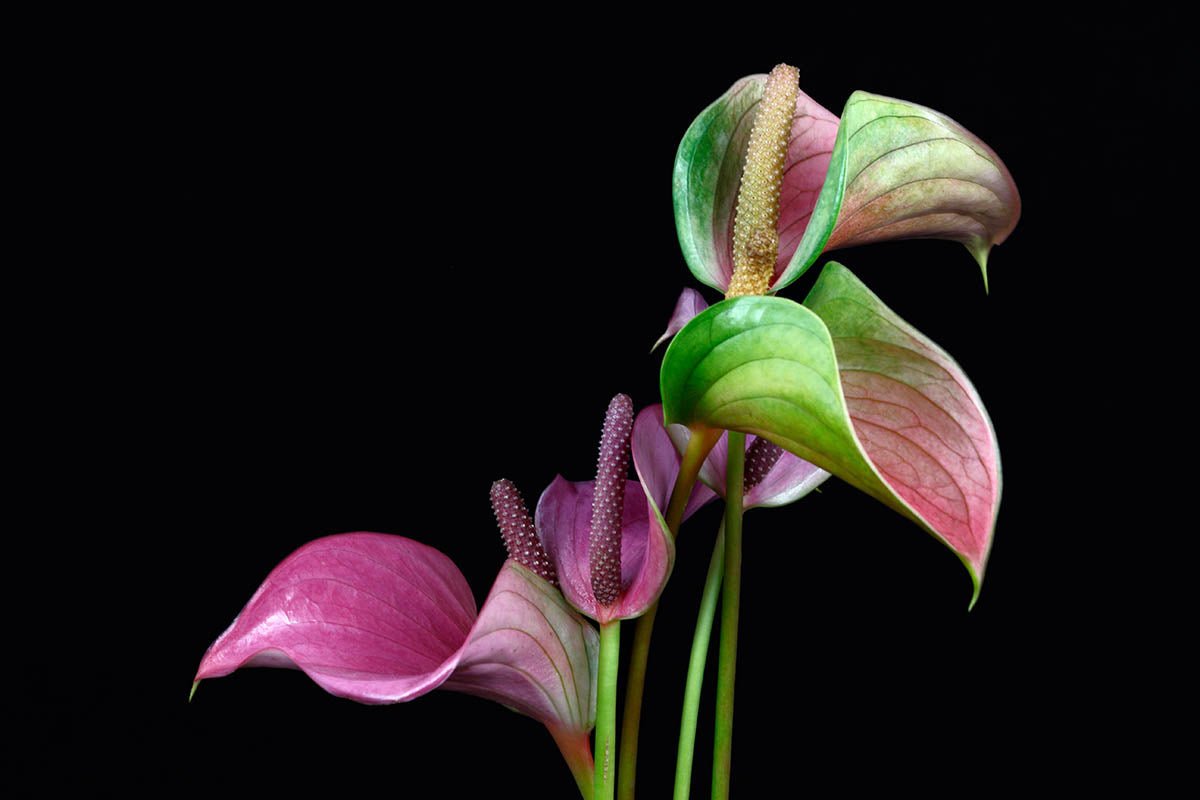The anthurium plant, also known as the flamingo flower, is a popular choice among indoor gardeners due to its attractive, glossy foliage and bright, showy flowers.
With the right care, anthuriums can thrive and bloom for years, making them a great addition to any home or office.
In this care guide, we will provide you with everything you need to know about growing and caring for anthurium plants.

Getting to Know Your Anthurium
- -Anthurium Plant Overview
- -Types of Anthurium Plants
- -Choosing the Right Anthurium for Your Home
Anthurium Plant Overview
Anthuriums are a tropical plant native to Central and South America.
They are a part of the Araceae family and are known for their distinctive, heart-shaped leaves and showy, colorful blooms. Anthuriums come in a variety of colors, including red, pink, white, and purple.
They also have different bloom shapes, including the classic spade shape, tulip shape, and obake shape.
Types of Anthurium Plants
There are over 1,000 species of anthuriums, but the most commonly grown are Anthurium andreanum and Anthurium scherzerianum.
Anthurium andreanum has large, heart-shaped leaves and long-lasting, waxy flowers.
Anthurium scherzerianum, on the other hand, has smaller leaves and shorter-lived flowers, but it blooms more frequently than Anthurium andreanum.
Choosing the Right Anthurium for Your Home
When choosing an anthurium plant, it's important to consider the environment in which it will be placed.
Anthuriums require bright, indirect light, so make sure to choose a location that provides enough light without exposing the plant to direct sunlight.
Additionally, anthuriums prefer warm, humid environments, so consider placing your plant in a bathroom or near a humidifier if your home is dry.
Finally, choose anthurium plants that have healthy, green leaves and no signs of pests or disease.

Anthurium Care Basics
- -Light Requirements
- -Temperature and Humidity
- -Watering and Fertilizing
- -Soil and Potting
- -Pruning and Maintenance
Light Requirements
Anthuriums require bright, indirect light to thrive. Direct sunlight can burn the leaves, so it's important to place your anthurium plant in a location where it will receive filtered sunlight or bright, indirect light.
If you notice that your plant's leaves are turning yellow or brown, it may be a sign that it's receiving too much sunlight.

Temperature and Humidity
Anthuriums prefer warm, humid environments.
They thrive in temperatures between 60-90°F (16-32°C) and require a relative humidity of at least 60%.
If your home is dry, consider using a humidifier or placing a tray of water near your plant to increase the humidity.

Watering and Fertilizing
Anthuriums require regular watering to stay healthy. Water your plant when the top inch of soil feels dry to the touch.
Avoid overwatering, as this can lead to root rot. Additionally, anthuriums benefit from regular fertilization during the growing season.
Use a balanced, water-soluble fertilizer every 2-3 weeks to provide your plant with the nutrients it needs to thrive.

Soil and Potting
Anthuriums prefer well-draining, loose soil that is rich in organic matter.
Choose a pot with drainage holes to allow excess water to escape, and use a well-draining soil mix that contains perlite or sand to improve drainage.
Pruning and Maintenance
Prune your anthurium plant as needed to remove dead or yellowing leaves and promote healthy growth.
Additionally, anthuriums benefit from occasional misting to increase humidity around the plant.
Finally, keep an eye out for signs of pests or disease, and take action immediately if you notice any issues.

Troubleshooting Common Anthurium Issues
- -Pests and Diseases
- -Yellowing or Browning Leaves
- -Root Rot -Blooms that Fail to Thrive
Yellowing Leaves
Yellowing leaves on anthurium plants can be a sign of overwatering, underwatering, or exposure to direct sunlight.
Check the soil moisture level and adjust your watering schedule as needed.
Move your plant to a location with less direct sunlight if necessary.
Brown Leaf Tips
Brown leaf tips on anthurium plants can be a sign of low humidity or overfertilization.
Increase the humidity around your plant by misting it regularly or using a humidifier.
Cut back on fertilization if you suspect overfertilization is the cause.
Wilting Leaves
Wilting leaves on anthurium plants can be a sign of underwatering or root rot.
Check the soil moisture level and adjust your watering schedule as needed.
If the soil is consistently damp and your plant is still wilting, it may be suffering from root rot.
In this case, repot your plant in fresh, well-draining soil and prune away any rotted roots.
Pests and Diseases
Anthuriums are susceptible to pests like spider mites, mealybugs, and scale insects.
They can also be affected by diseases like root rot and bacterial blight.
Keep an eye out for any signs of pests or disease, such as yellowing or spotted leaves, and take action immediately to prevent further damage.
Use an insecticidal soap or neem oil to treat pests, and prune away any infected leaves or stems to prevent the spread of disease.
In Conclusion
Now that you know the basics of anthurium care, it's time to put your knowledge into action.
Choose the right location for your anthurium plant, provide it with the right amount of light, humidity, and water, and keep an eye out for any signs of pests or disease.
With the right care, your anthurium plant will reward you with beautiful, long-lasting blooms.
So go ahead and give it a try – your green thumb will thank you!
By following these tips and guidelines, you can ensure that your anthuriums remain healthy and vibrant for years to come. Remember to provide your plant with the proper care, and it will reward you with beautiful, long-lasting blooms. Don't be afraid to experiment and learn from your own experiences with anthuriums.
Now that you know how to care for anthuriums, why not try growing one yourself? Head to our Anthurium Collection and pick out an anthurium plant that catches your eye. With the right care and attention, you can enjoy the beauty of this stunning plant in your own home.


